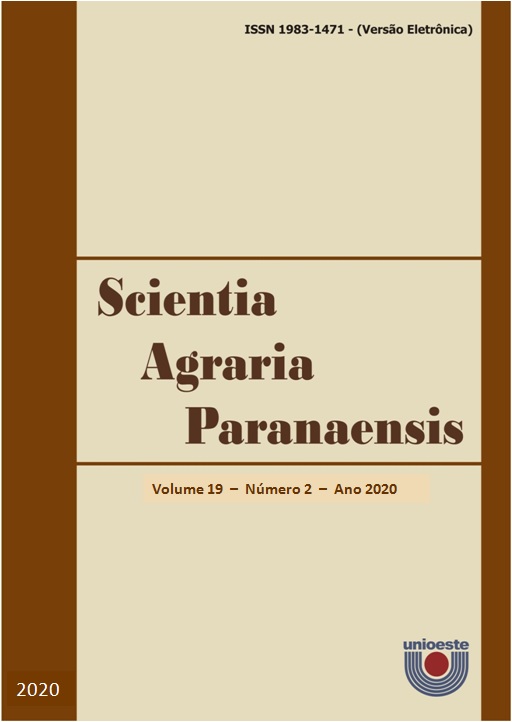Scarification in no-tillage: soil physics and plant development
DOI:
https://doi.org/10.18188/sap.v19i2.23439
Agências de fomento
Resumo
No-tillage is conservationist soil management for agricultural production and it is based on soil cover by crop residues and restricted mobilization to the sowing line. However, its structure can be affected by the excessive compaction resulting from the traffic of machines. The objective of this study was to evaluate soil physical properties and crop performance in no-tillage with and without scarification, combined with different successions of plant species, in a Humic Cambisol. For this, the species of black oat, wheat and forage turnip were cultivated in winter, and later, corn and beans in summer. Soil samples were collected at the beginning and at the end of the experimental period, while evaluations of plant yield were carried out in the final stage of development. Soil scarification reduces relative density (RD) and soil resistance to penetration (RP) after preparation of soil, with effect restricted to the surface layer. Such effects persist for one year, however RD and RP increase over time, regardless of soil management. RP is more sensitive for evaluation of soil compaction and correlates positively with RD, with exponential adjustment. The aerial biomass of black oat, wheat and forage turnip was not affected by soil scarification, and crop yield of beans and corn showed to be more related to the previous cultivation than the scarification in no-tillage.Downloads
Arquivos adicionais
Publicado
16-07-2020
Como Citar
PRAZERES, M. S.; BARBOSA, F. T.; BERTOL, I.; FEHLAUER, T. V. Scarification in no-tillage: soil physics and plant development. Scientia Agraria Paranaensis, [S. l.], v. 19, n. 2, p. 151–160, 2020. DOI: 10.18188/sap.v19i2.23439. Disponível em: https://saber.unioeste.br/index.php/scientiaagraria/article/view/23439. Acesso em: 24 dez. 2025.
Edição
Seção
Artigos Científicos
Licença
Aviso de Direito Autoral Creative Commons
Política para Periódicos de Acesso Livre
Autores que publicam nesta revista concordam com os seguintes termos:
1. Autores mantém os direitos autorais e concedem à revista o direito de primeira publicação, com o trabalho simultaneamente licenciado sob a Licença Creative Commons Attribution que permite o compartilhamento do trabalho com reconhecimento da autoria e publicação inicial nesta revista.2. Autores têm autorização para assumir contratos adicionais separadamente, para distribuição não-exclusiva da versão do trabalho publicada nesta revista (ex.: publicar em repositório institucional ou como capítulo de livro), com reconhecimento de autoria e publicação inicial nesta revista.
3. Autores têm permissão e são estimulados a publicar e distribuir seu trabalho online (ex.: em repositórios institucionais ou na sua página pessoal) a qualquer ponto antes ou durante o processo editorial, já que isso pode gerar alterações produtivas, bem como aumentar o impacto e a citação do trabalho publicado (Veja O Efeito do Acesso Livre).
Licença Creative Commons
Esta obra está licenciada com uma Licença Creative Commons Atribuição-NãoComercial-CompartilhaIgual 4.0 Internacional, o que permite compartilhar, copiar, distribuir, exibir, reproduzir, a totalidade ou partes desde que não tenha objetivo comercial e sejam citados os autores e a fonte.


